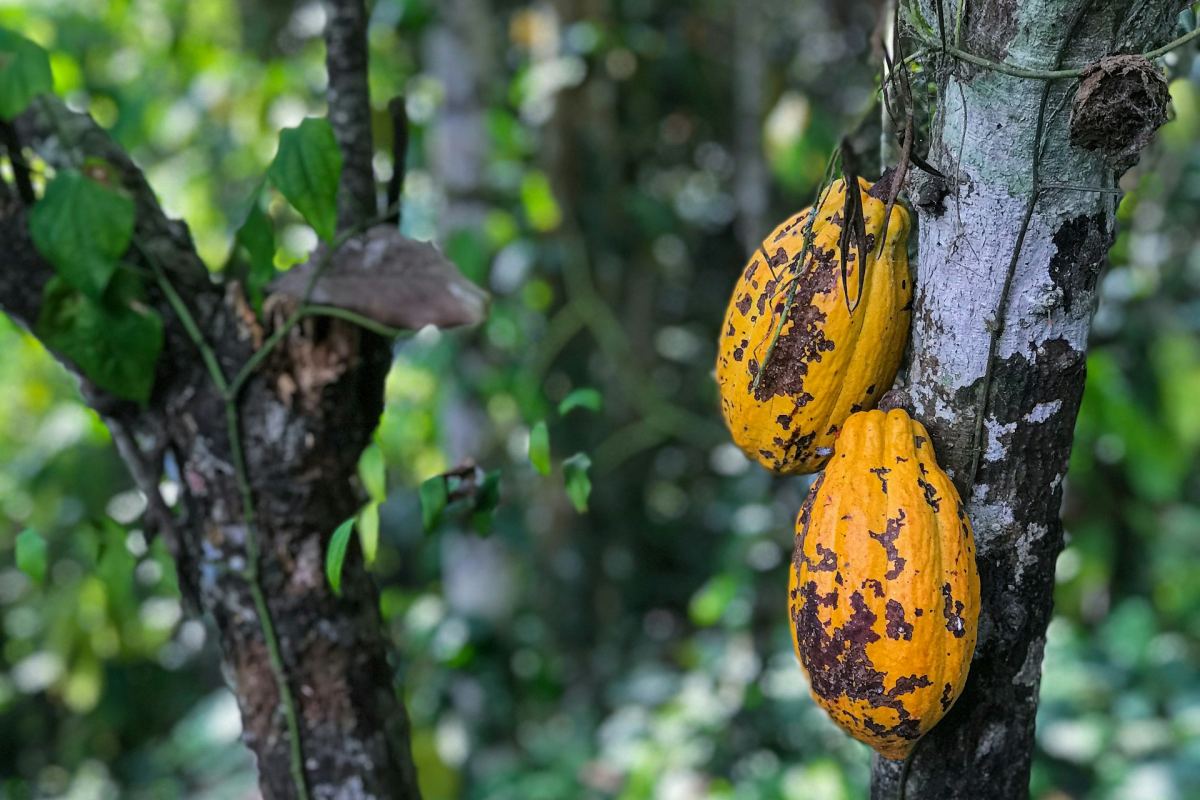Climate change adaptation in agricultural commodities: the case of cocoa
At the Conclima conference, Irene Paviotti and Evangelos Koumentakos from the European Cocoa Association (ECA) outlined how climate change is impacting cocoa production and the adaptation strategies being explored. Cocoa is a climate-sensitive crop, thriving only within narrow temperature, rainfall, soil, and altitude ranges. In major producing regions such as West Africa, rising temperatures, increasingly erratic rainfall, and prolonged droughts are reducing yields by between 2.5% and 37% (depending on drought severity), while also affecting pollination, soil quality, and tree health. Climate change is compounding pest and disease pressures—such as cocoa swollen shoot virus and vascular streak dieback—and increasing food safety risks from mould toxins and smoke contamination during drying.
The ECA described a two-pronged adaptation approach:
- developing more climate-resilient planting material through breeding programmes, and
- promoting improved farming practices.
Agroforestry (planting cocoa alongside carefully selected shade trees) was highlighted as a key measure, creating microclimates, improving soil health, supporting pollinators, and boosting biodiversity, while also contributing to carbon sequestration for climate change mitigation. Koumentakos emphasised the growing importance of quantifying carbon removals in cocoa systems and linking these to EU policy frameworks such as the LULUCF Regulation and the forthcoming Carbon Removal Certification Framework. The discussion underlined the need for integrated strategies that connect adaptation, mitigation, farmer livelihoods, and biodiversity objectives, supported by research, innovation, and coherent EU and global policy frameworks.
Key highlights
- Cocoa is highly climate-sensitive, requiring specific conditions:
- Temperature range of about 18–30 °C.
- Specific soil types (loose and well-drained), moderate rainfall distributed across the year, and altitudes generally under 300 m.
- In West Africa, climate change has led to:
- Increasing numbers of days above the optimal temperature range. In Ghana and Côte d’Ivoire, 2024 saw 3–6 consecutive weeks above this range in most observed cases, with around 70% of sites experiencing six weeks.
- A 15% drop in annual rainfall in Ghana between 2011 and 2022.
- Yield declines of 2.5–37%, depending on drought severity.
- Indirect effects include:
- Greater prevalence and severity of pests and diseases (e.g., cocoa swollen shoot virus, vascular streak dieback), with some linked to warmer, more humid conditions.
- Increased food safety risks:
- Ochratoxin A contamination from mould growth during unpredictable drying periods.
- Smoke contamination from artificial drying, leading to polycyclic aromatic hydrocarbons.
- Adaptation strategies:
- Climate-resilient planting material: developing cocoa varieties with greater resistance to drought, heat, and disease; ongoing breeding programmes have identified promising hybrids but require further testing and adaptation to local contexts.
- Improved farming practices: better water management (storage, irrigation, drainage), pruning, windbreaks, and especially agroforestry with selected shade trees to buffer temperature extremes, retain soil moisture, and support biodiversity.
- Agroforestry also supports climate mitigation by storing carbon. Research in Ghana and Côte d’Ivoire found only 13.2% of cocoa farms currently have shade tree cover; increasing this to 30% could sequester an additional 89 million tonnes of CO₂.
- Carbon sequestration in cocoa systems is linked to EU climate policy, including:
- LULUCF Regulation: tracking carbon stocks and balancing emissions and removals from land use.
- Carbon Removal Certification Framework: harmonising and assuring quality in carbon accounting methods.
- Effective adaptation depends on integrated approaches that also strengthen farmer incomes, protect biodiversity, and build long-term resilience in the sector.

